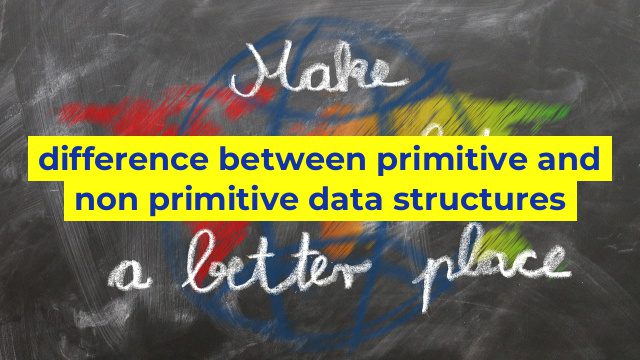The Difference Between Primitive and Non-Primitive Data Structures
Data structures are essential in computer science, serving as a critical foundation for many algorithms and software applications. Among the most fundamental aspects of data structures are primitive and non-primitive types.
What are Primitive Data Structures?
Primitive data types are the most basic and fundamental data types in programming. These are data types that are built into a programming language, and their values are not composed of any other type.
Examples of primitive data types include:
- Integers
- Floating-point numbers
- Characters
- Boolean values
Primitive data types are standardized across programming languages, with each language providing its own implementation of each data type. They are immutable and have a fixed size, making them memory-efficient and easy to manipulate.
What are Non-Primitive Data Structures?
Non-primitive data types, on the other hand, are not built into a language, and their values are composed of other primitive or non-primitive types.
Examples of non-primitive data types include:
- Arrays
- Linked lists
- Trees
- Graphs
- Hash tables
Non-primitive data types can be mutable, meaning their values can be changed, and they can grow or shrink dynamically in size. They offer more flexibility when it comes to data storage and retrieval, making them more powerful than primitive data types.
Conclusion
In summary, the main difference between primitive and non-primitive data structures is that primitive data types are pre-defined and immutable, while non-primitive data types can be composed of multiple other data types and are often mutable.
It is essential to understand the differences between these two types of data structures to make informed decisions when choosing the best data structure for a particular programming task. This knowledge can significantly impact the performance and efficiency of a software application.
Table difference between primitive and non primitive data structures
| Primitive Data Structures | Non-Primitive Data Structures |
|---|---|
| Primitive data structures are basic data types that are predefined by the programming language. They include integers, floating-point numbers, characters, and boolean values. | Non-primitive data structures are more complex and can be created using primitive data types. They include arrays, lists, stacks, queues, and trees. |
| Primitive data structures are represented by a fixed amount of memory space. | Non-primitive data structures can dynamically allocate or deallocate memory space according to the data it contains. |
| Primitive data structures cannot be broken down into smaller components. | Non-primitive data structures can be broken down into smaller components, such as nodes in a tree or elements in an array. |
| Primitive data structures are typically used for simple operations, such as arithmetic and logical operations. | Non-primitive data structures are used for more complex operations, such as searching and sorting. |

